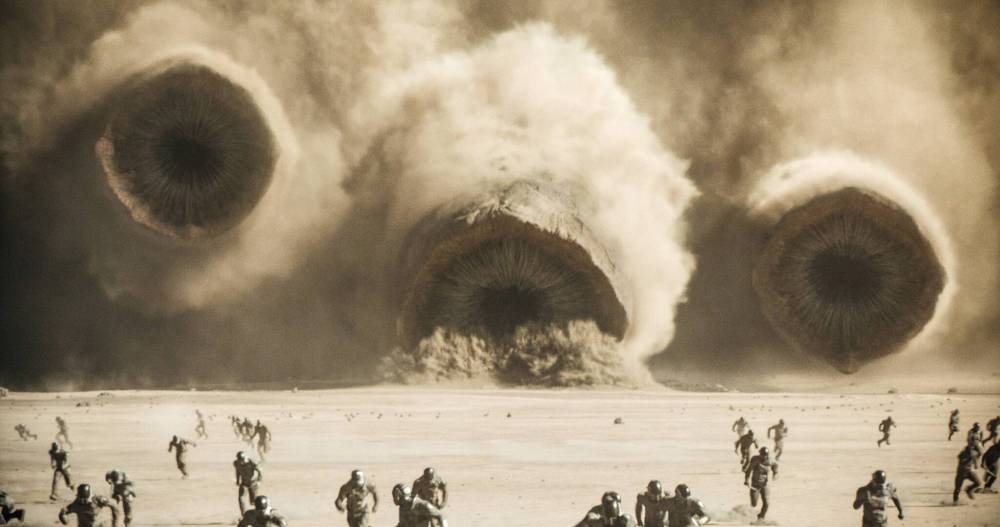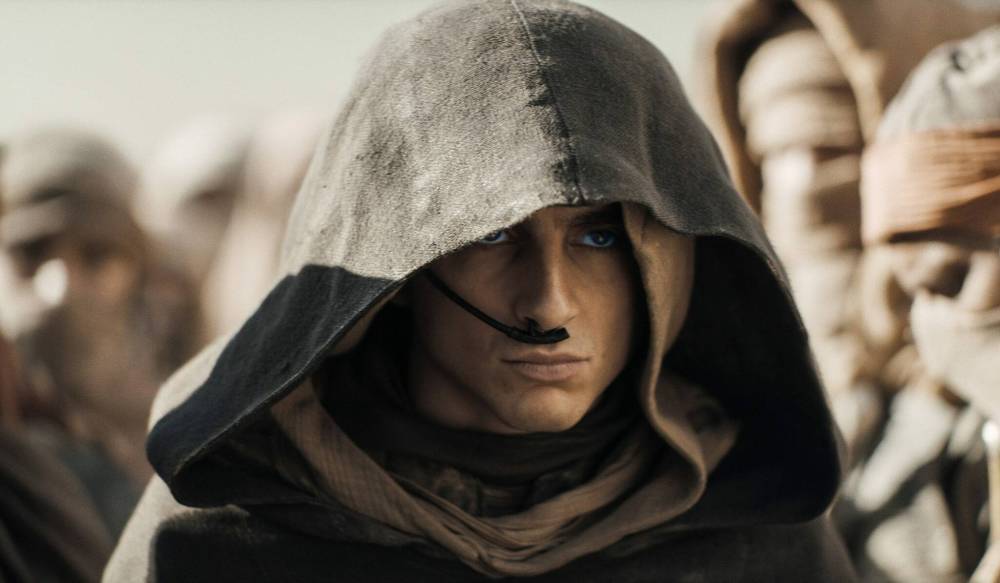Sandy saga surges on
Sci-fi epic’s midsection succeeds in sculpting its own finely grained universe
Advertisement
Read this article for free:
or
Already have an account? Log in here »
To continue reading, please subscribe:
Monthly Digital Subscription
$0 for the first 4 weeks*
- Enjoy unlimited reading on winnipegfreepress.com
- Read the E-Edition, our digital replica newspaper
- Access News Break, our award-winning app
- Play interactive puzzles
*No charge for 4 weeks then price increases to the regular rate of $19.00 plus GST every four weeks. Offer available to new and qualified returning subscribers only. Cancel any time.
Monthly Digital Subscription
$4.75/week*
- Enjoy unlimited reading on winnipegfreepress.com
- Read the E-Edition, our digital replica newspaper
- Access News Break, our award-winning app
- Play interactive puzzles
*Billed as $19 plus GST every four weeks. Cancel any time.
To continue reading, please subscribe:
Add Free Press access to your Brandon Sun subscription for only an additional
$1 for the first 4 weeks*
*Your next subscription payment will increase by $1.00 and you will be charged $16.99 plus GST for four weeks. After four weeks, your payment will increase to $23.99 plus GST every four weeks.
Read unlimited articles for free today:
or
Already have an account? Log in here »
Hey there, time traveller!
This article was published 01/03/2024 (610 days ago), so information in it may no longer be current.
Denis Villeneuve’s first Dune film, released in 2021, ended with these words: “This is only the beginning.” It was a sudden conclusion that left some viewers frustrated.
Here we are in the middle — the Quebecois filmmaker (known for Arrival and Blade Runner 2049) is hoping to add a third instalment to this massive sci-fi saga — and far from slumping,
The story begins where the last film left off, on the desert planet Arrakis, which produces a substance called “the spice.” The indigenous inhabitants of the desert, the Fremen, revere the spice for its sacred properties but the occupying imperial powers need it to fuel interplanetary travel, making it the most valuable substance in the universe.

Warner Bros. Pictures photos
The wrath of Shai-Hulud: the mighty sandworms of desert planet Arrakis bring shock and awe to Dune: Part Two’s epic, forcefully choreographed desert battles.
As noble dynasties vie for power and wealth and the Emperor (an underused Christopher Walken) strategically sets them against each other, House Atreides, the occupying power on Arrakis, has been attacked by a rival house, led by the monstrous Baron Vladimir Harkonnen (Stellan Skarsgard).
Movie review
Dune: Part Two
Starring Timothée Chalamet, Zendaya, Rebecca Ferguson and Javier Bardem
● Grant Park, Kildonan Park, McGillivray, Polo Park, St. Vital
● 166 minutes, PG
★★★★ out of five
Paul Artreides (Timothée Chalamet) and his mother, the Lady Jessica (Rebecca Ferguson), have fled into the desert, where they are taken in by the Fremen.
Stilgar (Javier Bardem), a Fremen leader and devoutly religious man, protects Paul. The warrior Chani (Zendaya), despite her mistrust of outsiders, mentors him, and the two fall in love.
Chalamet, like his character, is growing into his role. Paul is troubled by dreams and visions and, especially, by the prophecies of his mother, who is becoming an increasingly unsettling character, thanks in part to ferocious work by Ferguson.

Warner Bros. Pictures
Timothee Chalamet in a scene from Dune: Part Two.
Some of the Fremen see Paul as a long-prophesied religious messiah. Others hope he could be a revolutionary military and political leader. Paul must decide who he will become, but is his future predestined or is it chosen?
There’s more. So much more: super-stylized gladiatorial combat, forcefully choreographed hand-to-hand fighting, precisely orchestrated battle scenes, religious strife, mystical poison, drop-ins by Anya Taylor-Joy, Florence Pugh and Léa Seydoux. And sand worms. So many sand worms. (It helps to have read the book, or at least a Duniverse wiki, to fill in the sometimes abrupt junctures and gaps.)
The characters and their emotions can feel remote and removed and solemn, though Bardem gets a little playful and Walken, as always, is just a bit off-kilter.
There’s also a gleefully over-the-top embodiment of evil from Austin Butler as Baron Harkonnen’s nephew, a sadistic sociopath. (Now, instead of talking just like Elvis, Butler is talking just like Stellan Skarsgard, and it’s eerie.)
Villeneuve, cinematographer Greig Fraser and production designer Patrice Vermette pull off some extraordinary backdrops and set-pieces, drawing on such sources as Metropolis, Lawrence of Arabia, Apocalypse Now and more than a little Leni Riefenstahl. (House Harkonnen is very fascism-forward.)

Warner Bros. Pictures
Zendaya in a scene from Dune: Part Two.
But these influences are absorbed into a universe that feels like its own thing. At a time when blockbusters have been getting more generic and flimsy, there’s a lot to be said for visuals that are not just textured and solid but sometimes genuinely surprising.
Approaching Frank Herbert’s big ideas around authoritarianism, colonialism and capitalism and the human and environmental costs of resource extraction, Villeneuve sometimes struggles, but always in a sincere and valiant way.
While Herbert’s books have been claimed by both the left and right, Villeneuve is veering progressive, in particular trying to handle what could be seen as a white-saviour narrative, with “The Boy from the Outer World,” as Paul is called by some, leading a planet’s Indigenous peoples to war.
Villeneuve never quite sorts this issue out, but he does at least make some room for Chani’s skepticism about messianic religious thinking, supported by the character’s expanded role and Zendaya’s grounded performance.
The film also allows for Paul’s continuing ambivalence about heroism and victory. For a big Hollywood blockbuster, Dune is unafraid to say some very dark things about religion, politics, power and violence.

Warner Bros. Pictures
Timothee Chalamet (foreground left) and Austin Butler in a scene from Dune: Part Two.
And for those who didn’t like the ending of the 2021 film, be warned: this second instalment is also prepared to leave some its biggest questions unresolved.
alison.gillmor@winnipegfreepress.com

Studying at the University of Winnipeg and later Toronto’s York University, Alison Gillmor planned to become an art historian. She ended up catching the journalism bug when she started as visual arts reviewer at the Winnipeg Free Press in 1992.
Our newsroom depends on a growing audience of readers to power our journalism. If you are not a paid reader, please consider becoming a subscriber.
Our newsroom depends on its audience of readers to power our journalism. Thank you for your support.




